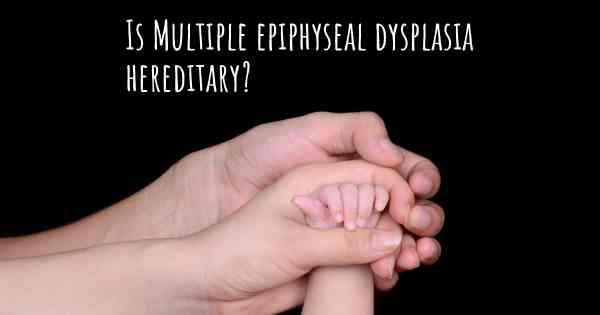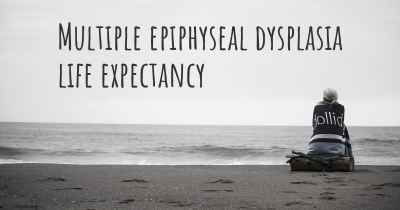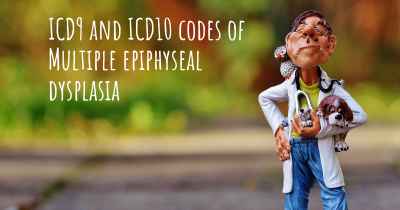Is Multiple epiphyseal dysplasia hereditary?
Here you can see if Multiple epiphyseal dysplasia can be hereditary. Do you have any genetic components? Does any member of your family have Multiple epiphyseal dysplasia or may be more predisposed to developing the condition?

Multiple epiphyseal dysplasia (MED) is a hereditary condition that affects the growth and development of the bones. It is caused by mutations in certain genes that are passed down from parents to their children. MED follows an autosomal dominant inheritance pattern, which means that an affected individual has a 50% chance of passing the condition on to each of their children. Genetic testing and counseling can help determine the risk of inheriting MED.
Is Multiple Epiphyseal Dysplasia Hereditary?
Multiple Epiphyseal Dysplasia (MED), also known as Fairbank disease, is a genetic disorder that affects the development of the bones and joints. It is characterized by abnormalities in the growth plates, which are responsible for bone growth and development. MED is considered a hereditary condition, meaning it can be passed down from parents to their children.
Genetics of Multiple Epiphyseal Dysplasia:
MED is primarily caused by mutations in certain genes that are involved in the production of collagen, a protein that provides structure and strength to connective tissues, including bones and cartilage. The most commonly affected genes in MED are COMP (cartilage oligomeric matrix protein), COL9A1 (collagen type IX alpha 1 chain), COL9A2 (collagen type IX alpha 2 chain), and COL9A3 (collagen type IX alpha 3 chain).
Inheritance Patterns:
The inheritance pattern of MED can vary depending on the specific gene involved. In most cases, MED follows an autosomal dominant pattern of inheritance. This means that an affected individual has a 50% chance of passing the condition on to each of their children. Both males and females are equally likely to inherit the disorder.
In some rare cases, MED can also be inherited in an autosomal recessive manner. This means that both parents must carry a copy of the mutated gene for their child to be affected. If both parents are carriers, each child has a 25% chance of inheriting the disorder.
Signs and Symptoms:
The signs and symptoms of MED can vary widely between individuals, even within the same family. Common features of the condition include:
- Short stature: Individuals with MED often have a shorter than average height.
- Joint pain and stiffness: Joint pain, especially in the hips and knees, is a common symptom. Stiffness and limited range of motion may also be present.
- Gait abnormalities: Some individuals with MED may have an abnormal walking pattern, such as a waddling gait.
- Joint deformities: Over time, the abnormal growth of bones and cartilage can lead to joint deformities, such as misalignment or irregular shape.
- Early-onset osteoarthritis: Due to the structural abnormalities in the joints, individuals with MED are at an increased risk of developing osteoarthritis at an earlier age.
Diagnosis and Treatment:
Diagnosing MED typically involves a combination of clinical evaluation, medical history assessment, and imaging studies. X-rays and other imaging techniques can help identify the characteristic abnormalities in the growth plates and joints.
While there is no cure for MED, treatment focuses on managing the symptoms and improving quality of life. This may include:
- Pain management: Nonsteroidal anti-inflammatory drugs (NSAIDs) or other pain medications may be prescribed to alleviate joint pain.
- Physical therapy: Exercises and stretches can help improve joint mobility and strengthen the surrounding muscles.
- Assistive devices: The use of orthotic devices, such as braces or shoe inserts, can provide support and improve mobility.
- Surgical interventions: In severe cases, surgery may be necessary to correct joint deformities or alleviate pain.
Genetic Counseling:
Given the hereditary nature of MED, genetic counseling is recommended for individuals and families affected by the condition. Genetic counselors can provide information about the inheritance pattern, assess the risk of passing on the disorder, and discuss available testing options.
Conclusion:
Multiple Epiphyseal Dysplasia is a hereditary disorder that affects bone and joint development. It is caused by mutations in specific genes involved in collagen production. The inheritance pattern can be autosomal dominant or autosomal recessive, depending on the gene involved. Diagnosis is based on clinical evaluation and imaging studies, while treatment focuses on symptom management. Genetic counseling is important for affected individuals and families to understand the risks and options associated with the condition.
Posted Dec 14, 2017 by Annalise 900








